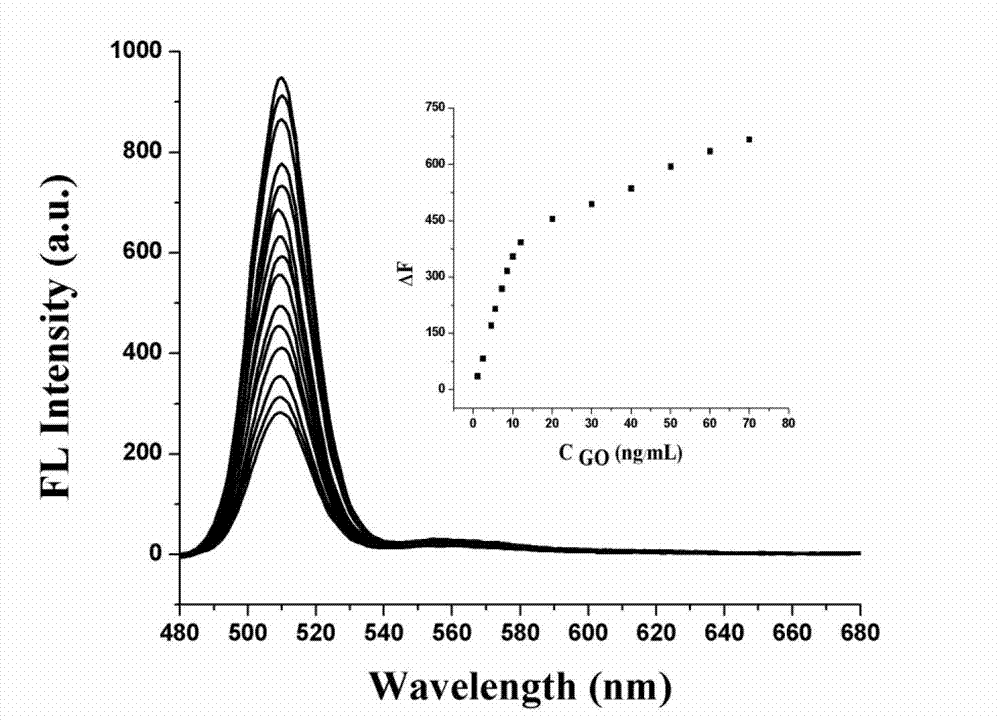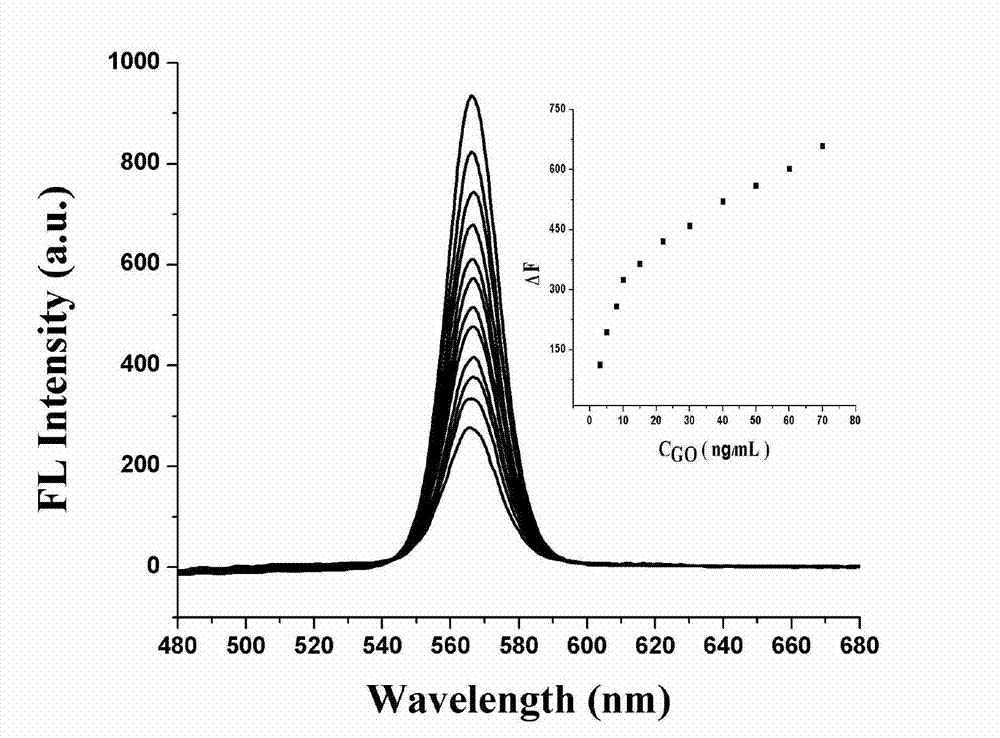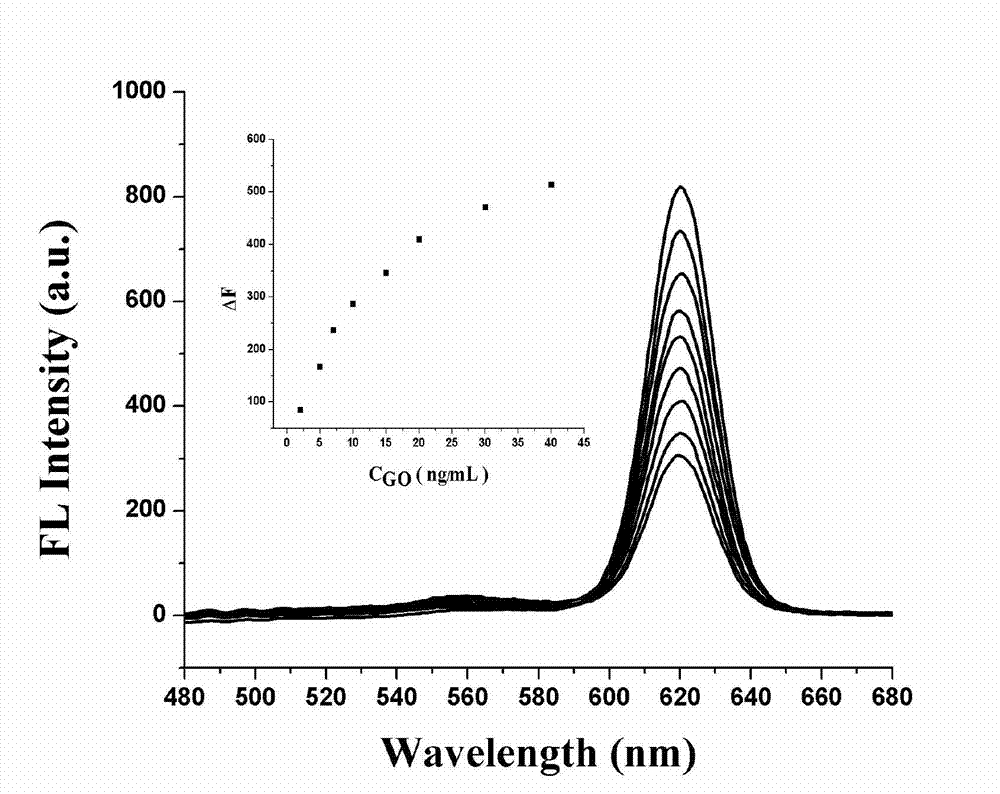Homogeneous immunoassay based method for synchronous fluorescence detection of multiple disease markers
A synchronous fluorescence and marker technology, applied in the interdisciplinary field, can solve the problem of inability to realize the simultaneous detection of multiple components, and achieve the effect of sensitive and selective detection, good selectivity and strong versatility
- Summary
- Abstract
- Description
- Claims
- Application Information
AI Technical Summary
Problems solved by technology
Method used
Image
Examples
Embodiment 1
[0029] A method for detecting multiple disease markers based on homogeneous immunosynchronous fluorescence, the steps of which are as follows:
[0030] (1) The monoclonal antibodies of influenza viruses H1N1, H5N1 and H9N2 to be tested were coupled with three succinimide ester-modified fluorescent dyes Alexa Fluor with different emission wavelengths, separated and purified, dissolved in pure water, and prepared as The concentrations of the three conjugates were all 1.0×10 -4 mol / L solution A is a mixed solution of three conjugates;
[0031] (2) Dissolve graphene oxide in pure water to make 1.0×10 -5 mol / L solution B;
[0032] (3) Mix 6 μL of solution A with a certain amount of solution B, and then dilute to 600 μL with pure water to obtain solution C. The dosage ratio of solution A and solution B is based on the molar ratio of the total amount of the three conjugates to graphene oxide 1 :10 meter;
[0033] (4) Take 500-1000 μL of solution C in a micro-volume fluorescence c...
Embodiment 2
[0040] A method for detecting multiple disease markers based on homogeneous immunosynchronous fluorescence, the steps of which are as follows:
[0041](1) The liver cancer markers AFP, CEA and CA125 monoclonal antibodies were coupled with three succinimide ester-modified fluorescent dyes Cy3 with different emission wavelengths, separated and purified, and dissolved in 15mM phosphate buffer solution of pH7.4 , the concentration of the three conjugates was prepared to be 1.0×10 -8 mol / L solution A is a mixed solution of three conjugates;
[0042] (2) Dissolve the mixture of graphene oxide and graphene in pure water to prepare a total concentration of 1.0×10 -6 mol / L solution B;
[0043] (3) Mix 6 μL of solution A with a certain amount of solution B, and then dilute to 600 μL with 15 mM pH 7.4 phosphate buffer solution to obtain solution C. The dosage ratio of solution A and solution B is based on the total amount of the three conjugates and The molar ratio of graphene oxide a...
Embodiment 3
[0049] A method for detecting multiple disease markers based on homogeneous immunosynchronous fluorescence, the steps of which are as follows:
[0050] (1) The monoclonal antibodies of anthrax virus, AIDS virus and hemorrhagic fever virus were respectively coupled with three succinimide ester-modified fluorescent dyes Cy5 with different emission wavelengths, separated and purified, dissolved in pure water, and prepared into three The concentration of each conjugate was 1.0×10 -5 mol / L solution A is a mixed solution of three conjugates;
[0051] (2) Dissolve graphene in pure water to make 1.0×10 -6 mol / L solution B;
[0052] (3) Mix 6 μL of solution A with a certain amount of solution B, and then dilute to 600 μL with 15 mM pH 7.4 phosphate buffer solution to obtain solution C. The dosage ratio of solution A and solution B is based on the total amount of the three conjugates and The graphene molar ratio is 1:20;
[0053] (4) Take 500-1000 μL of solution C in a micro-volume ...
PUM
 Login to View More
Login to View More Abstract
Description
Claims
Application Information
 Login to View More
Login to View More - R&D
- Intellectual Property
- Life Sciences
- Materials
- Tech Scout
- Unparalleled Data Quality
- Higher Quality Content
- 60% Fewer Hallucinations
Browse by: Latest US Patents, China's latest patents, Technical Efficacy Thesaurus, Application Domain, Technology Topic, Popular Technical Reports.
© 2025 PatSnap. All rights reserved.Legal|Privacy policy|Modern Slavery Act Transparency Statement|Sitemap|About US| Contact US: help@patsnap.com



